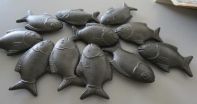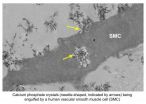(Press-News.org) ATLANTA May 22, 2014—A new review summarizes what is known about economic factors tied to the obesity epidemic in the United States and concludes many common beliefs are wrong. The review, authored by Roland Sturm, PhD of RAND Corporation and Ruopeng An, PhD, of the University of Illinois at Urbana-Champaign, notes that paradoxically, rising obesity rates coincided with increases in leisure time, increased fruit and vegetable availability, and increased exercise uptake. The review appears early online in CA: A Cancer Journal for Clinicians and finds at least one factor fueling the obesity epidemic: Americans now have the cheapest food available in history.
Today, two in three Americans are overweight or obese, with rates climbing steadily over the past several decades. Many factors have been suggested as causes: snack food, automobiles, television, fast food, computer use, vending machines, suburban housing developments, and portion size. The authors say forming a coherent picture is a challenge, but is necessary to assess whether the many proposed solutions, from encouraging physical activity and decreasing access to high calorie foods, to building more exercise-friendly environments, increased labeling, or even levying taxes on some foods, can make a difference.
After examining available evidence, the authors say widespread availability of inexpensive food appears to have the strongest link to obesity. They write: "Americans are spending a smaller share of their income (or corresponding amount of effort) on food than any other society in history or anywhere else in the world, yet get more for it." In the 1930s, Americans spent one-quarter of their disposable income on food. By the 1950s, that figure had dropped to one-fifth. The most recent data show the share of disposable income spent on food is now under one-tenth.
The authors review the evidence for other factors, and say the rise of electronic entertainment, increased use of cars, a shift in jobs away from those with physical demands, and increased urbanization also contribute to obesity. But they say the evidence for those associations is less strong, saying: "Examining time trends for which there are data, what jumps out are changes in food availability, in particular the increase in caloric sweeteners and carbohydrates."
The authors also suggest that policy interventions that focus on "positive" approaches or messages, such as increasing fruit and vegetable consumption and increasing physical activity, may not be the optimal approach. They conclude a more promising tactic is an emphasis on reducing calorie consumption, particularly sugar sweetened beverages and salted snacks. They write, for example: "Although increasing fruit and vegetable consumption may be a laudable goal for other health reasons, it is unlikely to be an effective tool for obesity prevention."
INFORMATION:
Article: Obesity and Economic Environments, R Sturm, R An; CA Cancer J Clin 2014; published early online May 22, 2014 doi: 10.3322/caac.21237.
Review says inexpensive food a key factor in rising obesity
2014-05-22
ELSE PRESS RELEASES FROM THIS DATE:
Scientists find new way to combat drug resistance in skin cancer
2014-05-22
RAPID RESISTANCE to vemurafenib – a treatment for a type of advanced melanoma, the deadliest form of skin cancer – could be prevented by blocking a druggable family of proteins, according to research* published in Nature Communications today (Thursday).
Scientists at the Cancer Research UK Manchester Institute, based at the University of Manchester, have revealed the MLK family of four enzymes 'undoes' the tumour-shrinking effects of vemurafenib**.
Around half of metastatic melanomas – aggressive skin cancer that has spread to other parts of the body – are caused by ...
Canada funds 65 innovative health projects to help save every woman, every child
2014-05-22
Grand Challenges Canada, funded by the Government of Canada, today announces investments of $12 million in projects worldwide, aimed squarely at improving the health and saving the lives of mothers, newborns and children in developing countries.
From a "lucky iron fish" placed in tens of thousands of Asian cooking pots to reduce anemia, to "motherhood insurance" to ensure that poverty doesn't impede emergency care if needed during a baby's delivery, to kits for home farming edible insects to improve nutrition in slums of Africa and Latin America, the 65 imaginative projects ...
New insights into premature ejaculation could lead to better diagnosis and treatment
2014-05-22
There are many misconceptions and unknowns about premature ejaculation in the medical community and the general population. Two papers, both being published simultaneously in Sexual Medicine and the Journal of Sexual Medicine, provide much-needed answers that could lead to improved diagnosis and treatment for affected men.
Premature ejaculation can cause significant personal and interpersonal distress to a man and his partner. While it has been recognized as a syndrome for well over 100 years, the clinical definition of premature ejaculation has been vague, ambiguous, ...
Could cannabis curb seizures? Experts weed through the evidence
2014-05-22
The therapeutic potential of medical marijuana and pure cannabidiol (CBD), an active substance in the cannabis plant, for neurologic conditions is highly debated. A series of articles published in Epilepsia, a journal of the International League Against Epilepsy (ILAE), examine the potential use of medical marijuana and CBD in treating severe forms of epilepsy such as Dravet syndrome.
In a case study, Dr. Edward Maa, Chief of the Comprehensive Epilepsy Program at Denver Health in Denver, Colo., details one mother's experience of providing medical marijuana to her child ...
Scientists announce top 10 new species for 2014
2014-05-22
SYRACUSE, N.Y. — An appealing carnivorous mammal, a 12-meter-tall tree that has been hiding in plain sight and a sea anemone that lives under an Antarctic glacier are among the species identified by the SUNY College of Environmental Science and Forestry's (ESF) International Institute for Species Exploration (IISE) as the top 10 species discovered last year.
An international committee of taxonomists and related experts selected the top 10 from among the approximately 18,000 new species named during the previous year and released the list May 22 to coincide with the birthday, ...
Temperature influences gender of offspring
2014-05-22
Whether an insect will have a male or female offspring depends on the weather, according to a study led by Joffrey Moiroux and Jacques Brodeur of the University of Montreal's Department of Biological Sciences. The research involved experimenting with a species of oophagous parasitoid (Trichogramma euproctidis), an insect that lays its eggs inside a host insect that will be consumed by the future larvae. "We know that climate affects the reproductive behaviour of insects. But we never clearly demonstrated the effects of climate change on sex allocation in parasitoids," Moiroux ...
Decision to jettison end of life Liverpool Care Pathway 'too extreme'
2014-05-22
The decision to jettison the approach to care of the dying, known as the Liverpool Care Pathway (LCP), was "too extreme," given that its principles are widely regarded as among the best examples of palliative care in the world, argues a senior ethicist in the Journal of Medical Ethics.
The LCP, which was intended to transfer the principles of hospice care to hospitals, fell foul of poor application by healthcare professionals and widespread misunderstanding of its scope and purpose among the general public, argues Dr Anthony Wrigley of the Centre for Professional Ethics ...
Improved GP access in standard hours may trump extended opening times
2014-05-22
Improving family doctor access during standard working hours might be better for reducing out of hours service use than extending the opening times of GP surgeries, suggests research published online in Emergency Medicine Journal.
If the link between access and out of hours service use is causal, this approach could cut demand for the latter by a maximum of 11%, the findings indicate.
Difficulties getting to see a GP when needed have been blamed for fuelling the rise in demand for out-of-hours primary care services, including emergency care. But there is not much evidence ...
Training brain patterns of empathy using functional brain imaging
2014-05-22
An unprecedented research conducted by a group of neuroscientists has demonstrated for the first time that it is possible to train brain patterns associated with empathic feelings – more specifically, tenderness. The research showed that volunteers who received neurofeedback about their own brain activity patterns whilst being scanned inside a functional magnetic resonance (fMRI) machine were able to change brain network function of areas related to tenderness and affection felt toward loved ones. These significant findings could open new possibilities for treatment of ...
Protective proteins reduce damage to blood vessels
2014-05-22
Researchers have uncovered how proteins found in our blood can reduce damage caused to blood vessels as we age, and in conditions such as atherosclerosis and arthritis.
Calcification is a major risk factor for heart attack and stroke. Blood vessels can harden as calcium phosphate (CaP) crystals, normally found in bones and teeth, build up in soft tissue as we age or as a result of illness. This can lead to complications in patients with atherosclerosis, a major cause of death in the UK whereby arteries thicken and are at risk of becoming blocked.
However a team of scientists ...

